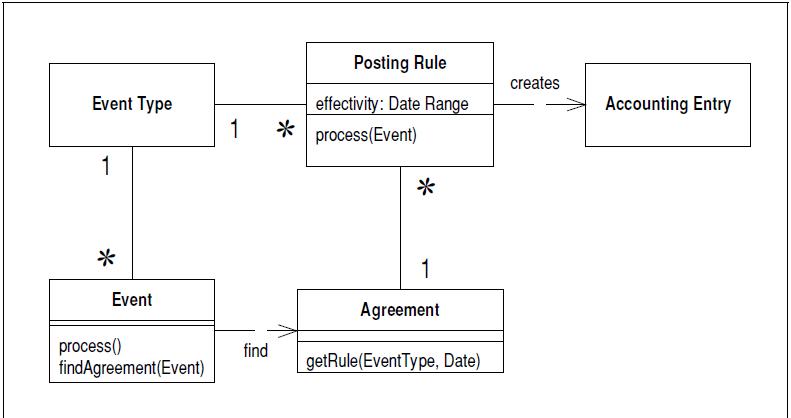Inventory and Accounting
Tanmay Bhola (Talk | contribs) |
Tanmay Bhola (Talk | contribs) (→Fundamentals) |
||
| Line 4: | Line 4: | ||
==Fundamentals== | ==Fundamentals== | ||
| − | A high level | + | A high level diagram of the main components involved in this domain has been shown below. |
| − | [[Image: | + | [[Image:AccountingFundamentals.JPG]] |
| + | |||
| + | -An event is anything that is of interest to the domain. | ||
| + | -A posting rule describes how that event | ||
== Event == | == Event == | ||
Revision as of 07:14, 20 October 2010
This page describes a set of analysis patterns which are useful for modelling any situation in which accounting or money/time/resources is required. The basic principle is that events in the real world have to logged and accounted for in some way. However, this gets tricky when you consider that some events can be revoked / amended at a later date.
Martin Fowler writes extensively about this analysis pattern in http://www.martinfowler.com/apsupp/accounting.pdf, which is an updated version of Chapter 6 of Martin Fowler 1997. This page should be considered a summary of his work.
Contents |
Fundamentals
A high level diagram of the main components involved in this domain has been shown below.
-An event is anything that is of interest to the domain. -A posting rule describes how that event
Event
According to MartinFowler, "an event caputers the memory of something interesting which affects the domain" MF-Analysis Patterns.
The section introduces
